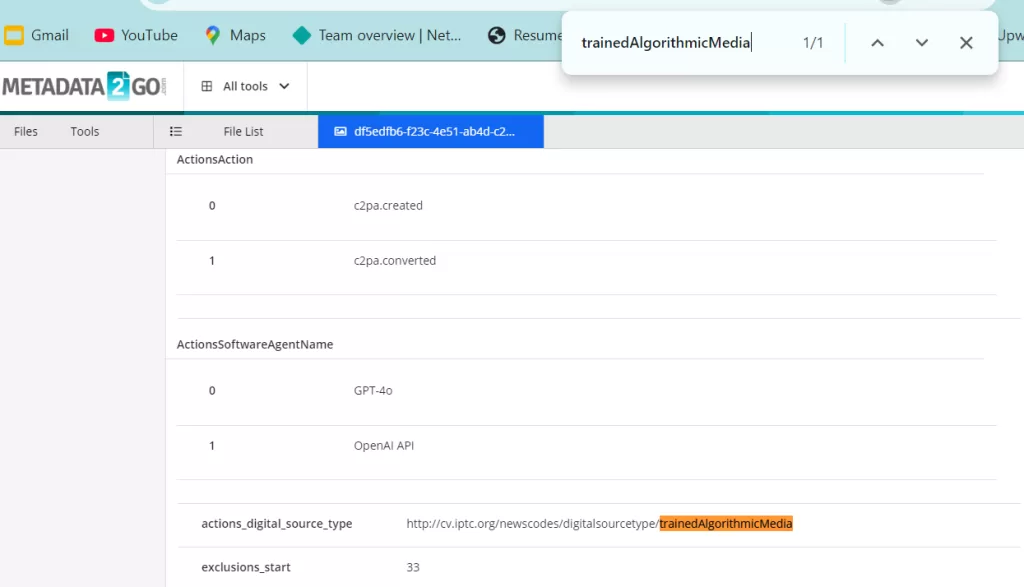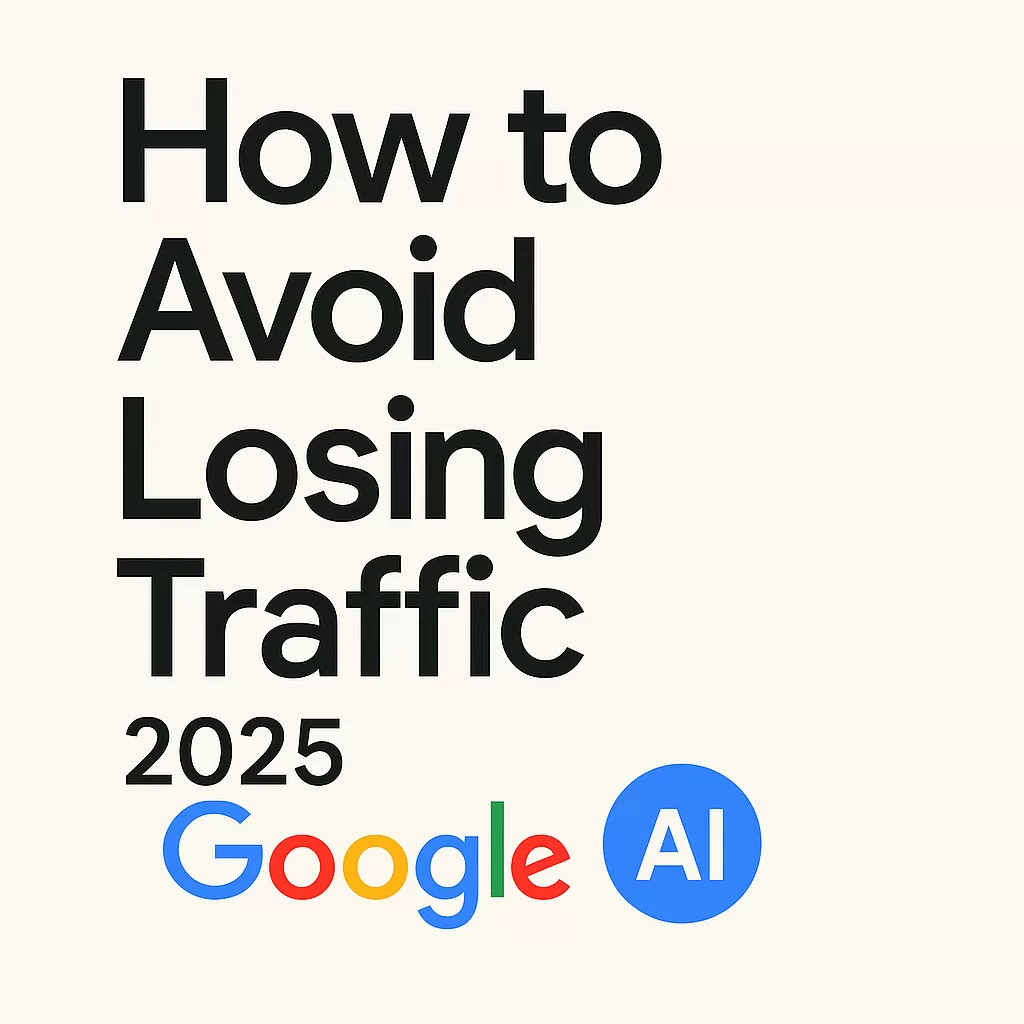What happens if your website uses AI-generated images? Why do some AI-based pages rank high, while others tank? Where is labeling mandatory – and where is it just about user trust?

This article breaks down Google’s 2025 updates on AI content and images, when to urgently check metadata, and how to make quick edits to avoid traffic loss and Google Merchant Center rejections.
If you only care about AI-generated images, skip the first section and jump straight to the practical guide.
Table of Contents:
- AI Content in Google Search Quality Evaluator Guidelines
- Not All AI Content Is Penalized: Google’s Quality Criteria
- Should You Label AI-Generated Images?
- Mandatory Labeling in Google Merchant Center
- How to Stay Compliant: Practical Checklist
- How to Check trainedAlgorithmicMedia Tag via Metadata2Go
- How to Edit Metadata Without Software (Online Tools)
- What Not to Do: Metadata Pitfalls
- SEO FAQ: AI Content & Images in Google Search
- Recommended Strategy: Using AI Without Getting Penalized
AI Content in Google’s 2025 Search Quality Evaluator Guidelines
Google doesn’t automatically downrank AI-generated content. But in the January 23, 2025 update to its Search Quality Rater Guidelines, it clearly states:
If the main content (text, images, video, etc.) is fully AI-generated without original effort or added value, it should receive the Lowest rating.
In short, if the page consists of copied or purely machine-generated content without usefulness to the user, it will be downgraded.
Not All AI Content Is Bad: Google’s Quality Criteria
Google clarifies: using AI doesn’t equal low quality. The guidelines say:
“Using Generative AI tools alone does not determine a page’s level of effort or quality rating. AI tools can be used to create both high- and low-quality content.”
“Even if you are unsure of the method of creation, e.g. whether or not the page is created using generative AI tools, you should still use the Lowest rating when you strongly suspect scaled content abuse after looking at several pages on the website.”
Google also accepts:
- Manual or AI-powered paraphrasing of content
- Content based on single or multiple sources
- Expert rewrites of complex information into simpler language (e.g., policy explanations)
If AI-generated content is valuable and reinterpreted for users, it’s acceptable- even encouraged.
The same goes for images: if an AI-created visual is unique and high-quality, it can be considered premium content.
Labeling AI-Generated Images with Metadata
Google announced that it is implementing transparent labeling of AI images using metadata (IPTC/XMP standards). On the official Google blog, it was announced that all images created by their own generative models will contain a special label in the file, and publishers are given the opportunity to add such metadata. This will allow a mark to be shown in search that the image was generated by AI.
In simple terms, Google encourages authors and sites to tag AI images in their metadata so that Google Images displays the “AI-generated” label.
This functionality is based on IPTC standards: for example, the DigitalSourceType field is used to indicate that an image is AI-generated (the “Composite Image” value or a more specific tag).
Note: There is currently no evidence that the absence of such a label directly reduces the page’s ranking in search results. The label is primarily intended to inform users (via a label in image search results), and not as a ranking factor. Google officially states that it will rank content based on usefulness and quality, regardless of how it was created – quality content is valued, whether it is human-written or AI-generated.
Thus, the absence of the “AI” mark in itself does not entail sanctions, if the image and the page as a whole comply with quality principles and do not mislead users.
Mandatory AI Image Labels in Google Merchant Center
Google has also introduced mandatory metadata requirements for AI images in Merchant Center (shopping ads). The Merchant Center rules explicitly state that if you use AI-generated product images, you must preserve all tags indicating generative origin in the file.
In other words, product images must be specified in the IPTC as being AI-generated, otherwise, it is a policy violation. These requirements are aimed at transparency in a commercial context and compliance with future regulations. However, for regular web pages (SEO), there is no such mandatory policy – it is more of a recommendation for transparency, but not a formal ranking factor.
⚠️ This is mandatory for product feeds, but not required for standard SEO pages.
How to Stay Compliant with Google’s AI Policies
When generating images via AI (e.g., Midjourney, DALL·E), metadata may be automatically embedded in the file.
Do not delete or strip metadata.
Be cautious during:
- Product image uploads (image_link)
- Additional images (additional_image_link)
- Lifestyle visuals (lifestyle_image_link)
Best practices:
- Use tools that retain IPTC metadata (e.g., Photoshop, GIMP)
- Avoid online tools that erase metadata
- If using AI generators, check for trainedAlgorithmicMedia tag via any metadata viewer
How to Check for trainedAlgorithmicMedia Using Metadata2Go
- Go to https://www.metadata2go.com/
- Click “Choose file” and upload your image
- Wait for the scan
- Use Ctrl+F to search for: trainedAlgorithmicMedia

✅ If found:
IPTC Digital Source Type: trainedAlgorithmicMedia → You’re compliant.
❌ If not found:
- Either the AI tool didn’t tag it
- Or metadata was removed during editing or compression
How to Edit Metadata Without Software Installation
Use https://www.thexifer.net/:
- Click “Start” > “Upload photo”
- After upload, click “eXif.me”
- Scroll to IPTC Metadata
- Add or edit Digital Source Type
- Set value to: trainedAlgorithmicMedia
- Click “Go eXifing” → then “Download me”
- Recheck the file on Metadata2Go
⚠️ What Not To Do
- Don’t compress via Telegram, WhatsApp, TinyPNG → these tools delete metadata
- Don’t use Paint, Canva, or unknown editors unless you verify metadata stays intact
SEO FAQ: AI Content & Images in Google
Does Google penalize AI content?
No. Only low-quality, duplicate, or value-less content gets downgraded.
Can AI content rank at the top?
Yes, if it’s expert-level, structured, and user-focused.
Should I label AI images?
Recommended for transparency. Mandatory for Google Shopping feeds.
What’s the risk of no AI label?
- No risk for SEO
- Policy violation in Merchant Center (leads to rejections)
Does labeling help ranking?
No. It’s a transparency tool, not a ranking factor.
Winning Strategy for AI Content in 2025
- Use AI to accelerate, not replace, expertise
- Always add value: analysis, expert insights, use cases
- Align content with search intent
- Label images for transparency or when required by Google policies

No responses yet